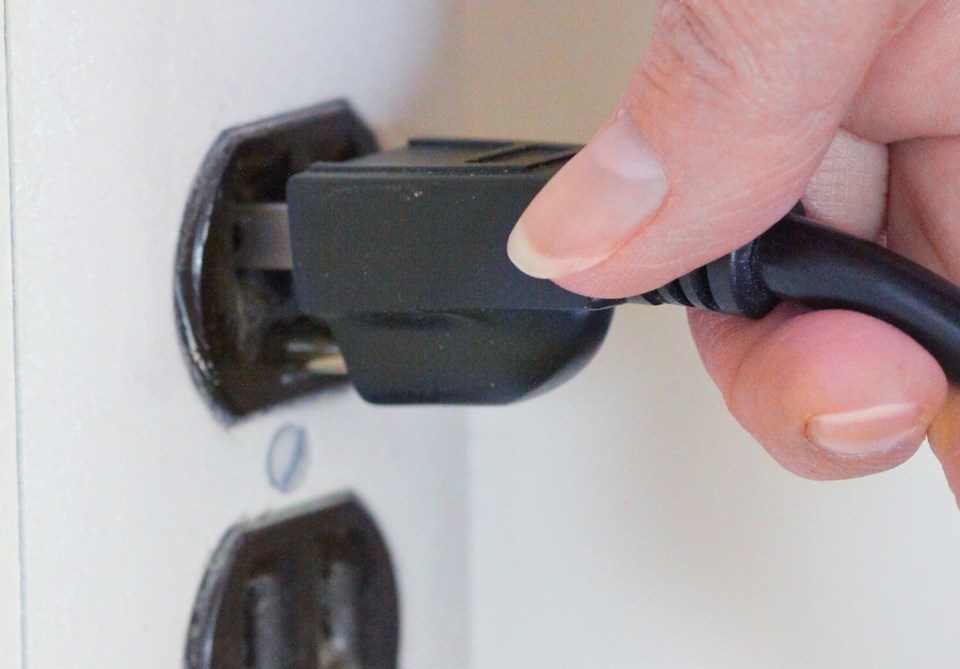Albertans are feeling the pinch with the rising cost of living and record-breaking electricity prices, the latter only increasing financial pressures as winter takes hold.
According to the Alberta Utilities Commission, the residential monthly regulated rate option for Direct Energy jumped from 10.483 cents per kilowatt hour (kWh) in November 2021 to 17.597 cents/kWh in November 2022. Enmax jumped from 10.66 to 18.245 cents/kWh in the same time frame.
Utility bills are based on power consumption for the billing period. In Alberta, consumers can choose their electricity service provider, as well as whether to opt for a fixed or variable rate option.
In 2016, Alberta’s then-NDP-government capped electricity prices under the regulated rate option at 6.8 cents/kW; however, the current UCP government removed it on Nov. 1, 2019.
For its part, the UCP government implemented a $50-per-month rebate directly on bills until the end of this year. The rebate totals $2.3 billion.
Shaffer said low supply, soaring demand, and reduced competitiveness are behind the drastic increase.
“It's not just sort of expensive, these are record [electricity] prices,” Blake Shaffer, electricity market economist at the University of Alberta, told Great West Media in September.
He expects rates to stay high until mid-2023, when new large natural gas plants are set to produce electricity for the grid, increasing supply and dropping prices for consumers.
With increasing costs on everything from a stick of butter to gasoline these days, higher electricity costs are a hard pill to swallow. However, there are some steps residents can take to reduce utility bills.
Shaffer recommends switching to a fixed-rate electricity bill, which can save Albertans anywhere from $70 to $100 per month. When rates drop, consumers can switch back to a floating rate, he added, but in the meantime, they can likely save quite a bit.
“Fixed rates are well, well, well below anything close to the floating right now. So, while they've gone up a little bit, they're not extremely high,” he said, noting fixed rates provide cost certainty and protect against sudden market changes.
It’s good practice to consider historical and forecast prices when considering a fixed versus variable rate and not simply opt for the cheapest rate available when you sign on with an energy provider.
Of course, lower energy consumption results in reduced costs and there are simple ways to reduce energy use in the home. For instance, switching from incandescent light bulbs to light emitting diode (LED) bulbs is a great place to start.
According to the Pennsylvania State University’s Center for Nanoscale Science, only 10 per cent of the energy used by an incandescent bulb is converted to light, while the other 90 per cent is lost as heat. The LED bulb is much more energy efficient and converts about 90 per cent of the energy used into light, requiring much less energy to produce the same amount of light as its incandescent counterpart.
Local electric utility company FortisAlberta suggests using bulls with the ENERGY STAR label, which confirms that the bulb is certified to save energy.
“Lighting accounts for approximately 10 percent of home electricity use. The average Canadian home has 30 light bulbs that together consume close to $130 of electricity every year,” according to Natural Resources Canada. “Installing energy-efficient bulbs and fixtures throughout your home – especially if they are ENERGY STAR qualified – is one of the smartest energy efficiency investments you can make.”
ENERGY STAR confirms the bulb is certified to save energy, according to local electric utility company FortisAlberta.
“An ENERGY STAR bulb will provide the same amount of brightness and consume fewer watts,” according to Fortis.
Look for lumens on the lighting facts label. Lumens indicate light output and watts indicate energy consumed – more lumens means a brighter light; fewer lumens means a dimmer light.
Employ motion sensors, dimmer switches and smart switches that allow you to control your lights remotely. Motion sensors enable the lights to turn off when you leave the room and smart switches can give you piece of mind when you can't recall if you turned off the lights in your rush out the door.
Modern dimmer switches save by reducing the energy flow and can extend the life of the light bulb. However, keep in mind some newer bulbs, like halogens or LEDs, might not work with the dimmer.
Ensure an air-tight seal throughout the home. Make sure windows and doors are properly sealed, and that any permanently installed window-air-conditioning units are covered.
Clean the lint from your dryer vents and refrigerator coils – located at the back of the unit – and regularly maintain and change your furnace filter to improve efficiency and prolong the life of the appliances.
Take advantage of a programmable thermostat to lower the home’s temperature when it's unoccupied or when occupants are asleep. According to Statistics Canada, Using a daytime winter temperature of 22 C as the benchmark, and setting the temperature at night to 18 C results in a 6.5 per cent savings in natural gas and 0.8 per cent reduced electricity consumption. Remember that spiking the heat uses more energy, as do space heaters.
“If you require [a space heater] to heat small spaces, consider buying an energy-efficient [one] or using a blanket,” suggests Fortis. The utility provider also recommends eliminating “energy hogs” that waste electricity.
“They are devices that use electricity even when they are turned off, and together may account for up to 20 per cent of your electricity bill,” according to Fortis.
Tackle energy hogs by turning off computers, lights, TVs and other appliances when not using them.
For more information and the Save Electricity Checklist, visit fortis.com and search “energy saving checklist.”
—With files from Jennifer Henderson/Great West Media



